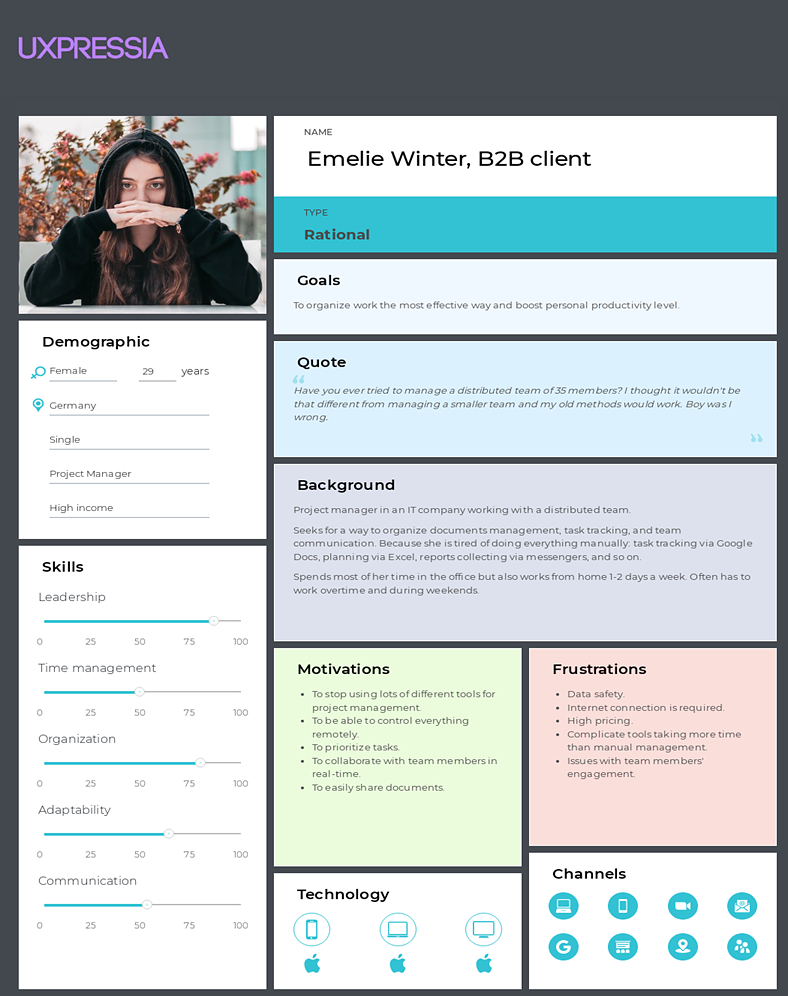What is more important: the product or the customer?
Some would say you can easily win a piece of the market with a disruptive product or service. Others would say even the fanciest thing can go unclaimed, as you may miss the target audience's needs or somehow spoil their experience.
Product-Centricity vs. Customer-Centricity
When I talk about a product-centric approach, I mean when companies develop products and services with the idea that a good hunter is more likely than average to get a lucky hit. They also believe that sometimes people don't know what they really want until they see it. And they believe in the power of persuasion.
But there's another approach where everything revolves around customers. The product or service is designed according to their needs, goals, frustrations, problems...
On the one hand, that takes effort and time. Customer research is a big deal. On the other hand, you get authentic loyalty instead of dependence, and you win in the long run.
It's impossible to say with certainty which approach is better. Microsoft is doing well despite its product-centric focus, whereas IBM, which relies on customer experience (CX), is not far behind.
And yet, 70% of B2B customers end their journey before the sales stage. So if you don't want to part with potential customers prematurely and you're ready to win their hearts and minds, the customer-centric approach is the way to go.
Placing Customers at the Heart of Business
Becoming a customer-centric organization is not easy. First, you have to know and understand the people you're selling to. Defining personas for your business can help you do that.
Personas are collective images of your customers backed up by research. They let you hide any number of people behind a fictitious person. You can have one, two, or even more personas if your audience is varied. And you can target as many personas as you consider reasonable.
Why Personas?
In addition to giving you an opportunity to walk a mile in your customers' shoes, personas have several benefits:
- Segmentation: You turn a huge audience into a few persona profiles that are realistic, relatable to everyone, and easily managed.
- Visualization: Instead of reading many pages of customer research data, you can look at a concise profile containing all the necessary information to share with stakeholders.
- Potential: You can always go further and build a customer journey map to find flaws and opportunities in you CX.
Building a Persona in Five Steps
Building a persona is an intricate process that requires some time, yet it pays off with a lot of insights. Here are five steps to take.
Step 1: Do research
The most important element of building personas is conducting high-quality research.
Take the time to collect data, conduct customer interviews, communicate with customer-facing staff, run surveys (e.g., customer satisfaction surveys) and polls, and study customer feedback. The more complete data you have on hand, the higher your chances of success.
Step 2: Identify patterns
Identify patterns in the data you have. It's best to rely on behavioral aspects, since those tell a lot more about customers and the way they buy than demographics do.
If you see, for instance, that a specific set of people shops online using a tablet, visits your website at homepage, already used a similar product, and share a few other behavioral attributes single them out as a separate persona.
Step 3: Create a customer profile
You can create a profile on a whiteboard, on paper, in Google Sheets, or with a professional persona creator tool. Digital profiles are handier because they allow you to make changes quickly and you can easily share them with the team, especially if team members are distributed or remote.
Step 4: Add details to your persona profile
Personas have to be humanized. They are made-up characters, but there are real people behind them. A photo, a name, maybe even a personality type—add whatever you think will breathe life into your persona.

Step 5: Enter the market
When your personas are ready, it's time to make the most of them.
How do personas can help you enter the market with confidence?
Armed with personas, you'll find it easier to create and redesign products or services. If you made a lot of assumptions before, now you know a lot for certain.
Personas can help you win a piece of the market and connect to customers in the following ways:
- Development strategy: Knowing your personas, you can identify a niche they have settled into and aim for it without diffusing your efforts.
- Product range: If you make several versions of a product for different personas rather than having a unified one for all your customers, you might sell more of the product.
- Pricing: Knowing your personas' budgets, you can understand what profit margin won't empty their pockets.
- Positioning: Knowing the pains and goals of personas, you can soothe their pain points with your product or service.
- Messaging: When you use your personas' vocabulary, you speak the same language they do, thus resonating more than your competitors.
- Promotion: Marketing strategies can be tested on a certain number of customers represented by a persona; and in case of a success, you'll be sure that other people under that persona's umbrella will respond positively, too.
- Channels: Knowing what kind of channels your personas prefer lets you approach customers in the very places they expect you to appear.
- Selling: When you understand the needs of your target audience and the struggles they face throughout buying and using your product or service, you'll be able to sell more.
How Personas Improve the Overall Customer Experience
Whether you are launching a product or have already launched, building personas has a positive impact on the overall customer experience. Here's why:
- You focus on the best solution for your customers instead of trying to create a product that would beat your competition, thus improving the product and enhancing the customer experience at the same time.
- Customers see that your business cares about them and that their opinion matters, so they share honest feedback and valuable ideas more often, improving the end-product for themselves. They also become brand advocates, promoting your business among family, friends, and even random people.
- By knowing the pains, goals, and expectations of your customers, you can create useful and shareable content.
- Employees have common knowledge about your customers. They empathize with them and understand how to approach them.
Summing Up
You can choose just about any path and, with due diligence, succeed. But if your business is determined to create long-term relationships with your clients based on trust and loyalty, the customer-centric approach is better than focusing on product. And creating personas can help, because it's one of the most insightful ways to understand and target people who buy from you.
More Resources on Customer-Centricity and Personas
Three Lessons in Customer-Centricity
Five Steps to Becoming a More Customer-Centric Company
How to Use Buyer Personas to Understand Your Customers in a Post-COVID World




